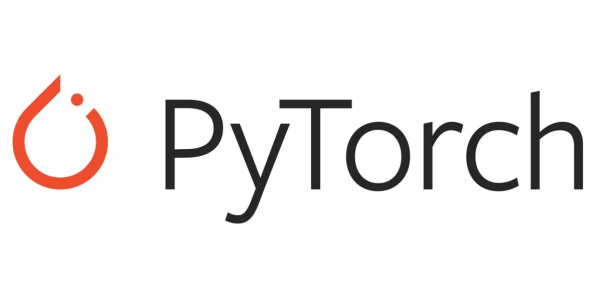What is A Library?
Libraries are utility modules containing functions that are used in your application code in order to carry out a specific function without creating functionality from scratch.
Libraries are very useful for Artificial Intelligence. This is also why the major IT companies are in such intense rivalry with one another to hire the top computer scientists and develop AI library software.
This article provides a guide that offers an understanding of the open-source libraries used in Python for Artificial Intelligence development.
You can use these tools to speed up and simplify your regular tasks and research.

Popularity Of Python In AI Development
Python is the world’s most widely used programming language for AI development. It has a sizable developer community that actively uses it for several projects. Many businesses that offer services to create AI solutions also use Python.
Python is used to create several well-known libraries, including Tensorflow, Keras, Scikit-learn, and many more. While businesses or organizations back some, others are created by the community.
Python’s popularity in AI development is still strong today, as seen by the numerous active projects based on its fundamental libraries and frameworks.
Most Popular AI Libraries in Python
The most popular python libraries are as follows:
1. PyTorch
PyTorch is a Python machine-learning library that is a free and open source. It puts much emphasis on flexibility and efficiency. The library is designed to be flexible, intuitive, and user-friendly, making it a popular choice for data science and artificial intelligence tasks.
The Facebook Artificial Intelligence Research (FAIR) team created PyTorch with significant help from other Facebook researchers.
PyTorch is an open-source Python library that offers a high-level solution for machine learning and deep learning. As PyTorch is developed in C++, it is quicker than other frameworks of a similar kind, like TensorFlow.
PyTorch has a variety of applications, but some of the more popular ones include image classification, natural language processing, and reinforcement learning.

Key Features And Capabilities
PyTorch library offers a variety of useful features, such as:
● Building complex models using tensor computation and automatic differentiation.
● Computational graphs that allow for faster debugging and more flexibility when designing models.
● Easy deployment of pre-trained models to various devices, including GPUs.
● Strong community support and active development.
2. TensorFlow
TensorFlow is an open-source software framework for numerical calculation using data flow graphs. It is designed for extensive AI and machine learning applications, including neural networks.
It enables programmers to quickly create and distribute computational graphs that work effectively across a range of platforms. The library is widely used in the field of data science and machine learning and has become a standard tool for developing and training artificial intelligence models.
It was initially created by researchers and engineers on Google’s Machine Intelligence Research Group’s Google Brain team. TensorFlow is a scalable machine learning framework for training deep neural networks quickly.
It uses TensorFlow Lite’s mobile device capabilities to offer a comprehensive development environment for machine learning applications.
Speech recognition systems, picture and video recognition and tagging, self-driving vehicles, text summarization, and sentiment analysis are some of the prominent TensorFlow applications.

Key Features And Capabilities
Several features of TensorFlow distinguish it from other open-source machine learning frameworks, including:
● Building complex models by creating computation graphs.
● Multi-platform architecture that supports CPUs, GPUs, and TPUs.
● Provides access to both low-level and high-level APIs, providing beginner and expert flexibility.
● Large community support and active development
Keras Integration With Tensorflow
Keras is a high-level neural networks API that implements several types of neural network models in a single machine learning library, allowing deep learning applications to be constructed more quickly and effectively.
Users can include TensorFlow models into Keras models as backend layers or use Keras directly to create their own unique neural network models due to the integration of Keras and TensorFlow.
3. Transformers (by Hugging Face)
Transformers is a Python library that can convert data structures into other data structures. It has been around for a while and applied to several projects.
Transformers’ user-friendly, straightforward interface makes it simple to modify data quickly and effectively, making it a great tool for data scientists and developers.
Hugging Face created the first Transformers library, which many others have since enhanced. In the realm of data science, Transformers is a great library for creating algorithms for text-based sentiment analysis.
It makes a number of natural language processing tasks simple to do by using the Natural Language Toolkit.

Key Features And Capabilities
The Hugging Face Transformers library for natural language processing offers the following key features:
● A collection of over 100 NLP transformer models pre-trained for different tasks.
● Support for multiple frameworks, including PyTorch and TensorFlow.
● Fast and easy integration with pipeline API for NLP tasks.
4. Scikit-learn
Scikit-learn is a machine learning python library that offers a number of high-level Python modules for data mining and analysis and is widely used in the field of data science, as well as several implementations of algorithms and various visualization-related components.
Scikit-learn is an effective tool for data scientists that enables them to create, use, and assess machine learning models quickly and without needing to write complex code.
Scikit-learn’s cross-validation support is its most significant element. This enables you to evaluate the performance of several models across various datasets.

Key Features And Capabilities
Among the features of Scikit-learn are:
● Supervised learning algorithms like classification and regression, clustering, dimensionality reduction, and topic modeling.
● Unsupervised learning algorithms like clustering and dimensionality reduction.
● Predictive modeling algorithms like logistic regression and support vector machines (SVMs).
● Recommender systems using collaborative filtering.
5. NumPy
NumPy is a Python scientific computing library with applications in numerical mathematics, data analysis, scientific computation, and theoretical computer science. It provides strong functions and data structures that let users build intricate mathematical models and analyze data quickly.
Because of its many capabilities, NumPy is a crucial tool for any scientific computing project. It enables users to create complex mathematical models and analyze data quickly.
NumPy can handle any numeric shape array up to around 10 billion items. NumPy has several aggregate functions, including mean, maximum, and standard deviation, in addition to simple scalar values.

Key Features And Capabilities
In NumPy, Python programs can work with large multidimensional arrays and matrices of numeric data, as well as a wide range of mathematical functions. NumPy has the following key features:
● The interface provides the ability to read and write large arrays of objects.
● Multidimensional arrays, broadcast arrays, sparse arrays, fixed-size arrays, variable-size arrays, and broadcast arrays are supported.
● Supports multidimensional indexing and slicing operations.
Other Popular Libraries
Here are some other popular libraries in Python:
● Pandas: Python’s Pandas library provides powerful data analysis and manipulation features.
● OpenCV: An open-source Python library for computer vision and machine learning.
● Matplotlib: An open-source Python library for plotting data.
● Seaborn: Matplotlib-based data visualization library for Python.
● NLTK: A Python platform for building human language programs.
● SpaCy: Python library for industrial-strength natural language processing.
● Gensim: An open-source library for topic modeling and document similarity analysis in Python.
Conclusion
Python libraries can help you accelerate the development of your AI projects. Python is one of the most widely used languages for AI development and is a highly well-liked computer language. It is simple to create complicated applications thanks to its various libraries for AI development.
These most popular python libraries offer the required tools and resources to create and deploy efficient AI models, regardless of whether you are a beginner or an experienced AI developer. These python libraries’ success and ongoing development show how effective the Python programming language is as an AI and machine learning platform.
So, if you want to become an AI master, Python is the way to go – it’s like the Jedi of programming languages!
Frequently Asked Questions
Which Python libraries should I learn first?
Matplotlib – Although it’s not easy to create a plot with Python, there are some libraries for it. matplotlib is a good starting place. It’s primarily a result of the simple user interface and mature documentaries containing numerous examples.
Which Python library is more popular?
Numpy has become a well-respected Python machine learning library.
How many libraries are there in Python?
Currently 133 000 Python libraries exist. Some are more complex than others, some can be simpler to learn.

